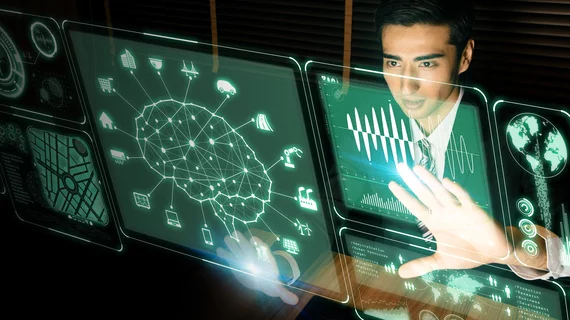Artificial intelligence (AI) could be a true game-changer for medical image interpretation, especially women’s imaging. But nothing is guaranteed. To be viewed as clinically viable, according to a recent commentary published in the American Journal of Roentgenology, AI needs to excel in four key areas: performance, time, workflow and cost.
Performance
“The most important condition that AI must satisfy is to improve the performance of mammography,” wrote co-authors Ray C. Mayo, MD, and Jessica W. T. Leung, MD, of the department of radiology at the University of Texas MD Anderson Cancer Center in Houston. “Without this achievement, there is no utility in the technology for interpretation purposes.”
The authors added that computer-aided detection (CAD) has achieved “acceptable” sensitivity up to this point, but false-positive results have been on the rise. Where CAD using AI can make an impact is in decreasing those false-positives.
In addition, Mayo and Leung noted AI has shown great promise in its ability to assign breast density, which is a good sign that its performance is headed in the right direction.
Time
AI CAD can save radiologists significant time if, for example, it can identify negative findings, generate the radiology report as necessary and then close out the case, all on its own.
“If even a small percentage of cases can be identified as negative with 100 percent certainty, a substantial amount of valuable physician time can be directed at more complicated cases and other activities requiring human intervention,” the authors wrote.
AI also has potential to make a big difference in the emergency room setting, but if it moves slow and leads to delays in patient care, it has failed both the providers and, more importantly, their patients.
Workflow
“The AI effort should start before image acquisition by combing the medical record to identify patients in need of appropriate imaging,” Mayo and Leung wrote. “The ordering process and scheduling may then be initiated automatically on behalf of the referring physician. The radiologist's review of the AI image analysis should be completely integrated into the post-acquisition process.”
Another key element, the authors observed, is that AI should not require radiologists to juggle multiple workstations or computers. This will require hardware and software manufacturers to develop solutions that bring AI into the department that embrace interoperability and flexibility.
Cost
If AI costs so much that a cost-benefit analysis finds it is not worth the investment, the technologies will likely never catch on. And as the authors explained in their commentary, there is a lot to consider when it comes to analyzing the costs of AI.
“Given that false-positive mammograms are estimated to cost the health care system approximately $4 billion each year, a decrease in false-positive CAD flags has strong potential to lower the overall cost of breast imaging,” Mayo and Leung wrote, listing just one example of how AI could potentially bring cost savings to women’s imaging.

